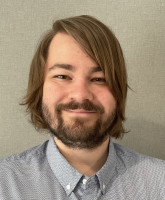Health
Chronic & Non Communicable Diseases
Longevity, Ageing and Long-term Care
Cancer
Cellular Ageing
AXA Projects
Sweden
Characterisation of the underlying mechanisms of ageing and cancer
Cancer touches many of us personally, and will do so even more often in the future: the number of new cases is expected to rise from 14 million in 2012 to 22 million within the next 20 years. If we hope to slow this trend, we must understand more about how cancer develops in the first place.
This is a very diverse family of diseases, which makes it hard to pin down any one trigger. But something most cancers have in common is genomic instability. This means that, for various possible reasons, the DNA of cancer cells has experienced a high rate of mutation, or change to the genetic code. Prof. Thomas Helleday believes that understanding what causes this instability in our genes will illuminate how cancer begins and provide new targets for therapies.
With over 100 mutations occurring each day, on average, it is vital for a cell to be able to repair these mistakes and avoid becoming cancerous. When the cell copies its DNA before cell division, the two strands of genetic material unwind, allowing the replication machinery to pass. If it encounters a damaged area of DNA, it may come to a halt, leaving a double-stranded break. Helleday’s lab has identified the principal repair mechanism in these cases as homologous recombination (HR). Each of our chromosomes is lucky enough to have a partner carrying corresponding genetic information. If a break occurs in the DNA of one, the missing sequence can be copied from the other chromosome. This much is known, but many details of the process have yet to be revealed.
Helleday aims to identify new proteins involved in the HR repair mechanism and to unravel their precise roles. His strategy involves a particular relationship that may exist between the genes that produce them. Sometimes two genes interact in such a way that one may contain a mutation and the cell will still survive, but if both genes are mutated, the cell will die. Identifying this type of relationship can show where the role of one gene is backed up by another, thus revealing the function of each gene’s protein product. Demonstrating just how homologous recombination normally works to repair DNA damage promises to provide fundamental information about the origins of cancer when things go wrong.
This is a very diverse family of diseases, which makes it hard to pin down any one trigger. But something most cancers have in common is genomic instability. This means that, for various possible reasons, the DNA of cancer cells has experienced a high rate of mutation, or change to the genetic code. Prof. Thomas Helleday believes that understanding what causes this instability in our genes will illuminate how cancer begins and provide new targets for therapies.
With over 100 mutations occurring each day, on average, it is vital for a cell to be able to repair these mistakes and avoid becoming cancerous. When the cell copies its DNA before cell division, the two strands of genetic material unwind, allowing the replication machinery to pass. If it encounters a damaged area of DNA, it may come to a halt, leaving a double-stranded break. Helleday’s lab has identified the principal repair mechanism in these cases as homologous recombination (HR). Each of our chromosomes is lucky enough to have a partner carrying corresponding genetic information. If a break occurs in the DNA of one, the missing sequence can be copied from the other chromosome. This much is known, but many details of the process have yet to be revealed.
Helleday aims to identify new proteins involved in the HR repair mechanism and to unravel their precise roles. His strategy involves a particular relationship that may exist between the genes that produce them. Sometimes two genes interact in such a way that one may contain a mutation and the cell will still survive, but if both genes are mutated, the cell will die. Identifying this type of relationship can show where the role of one gene is backed up by another, thus revealing the function of each gene’s protein product. Demonstrating just how homologous recombination normally works to repair DNA damage promises to provide fundamental information about the origins of cancer when things go wrong.
Getting to the root of cancer
To add or modify information on this page, please contact us at the following address: community.research@axa.com

Thomas
HELLEDAY
Institution
Karolinska Institutet
Country
Sweden
Nationality
Swedish


